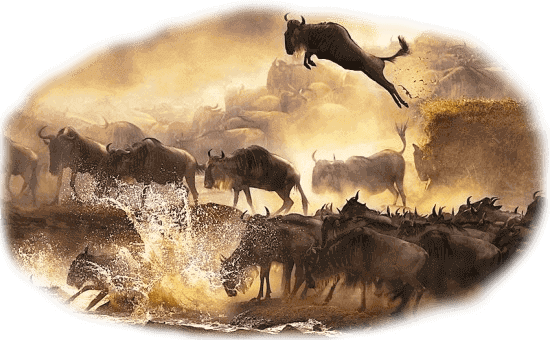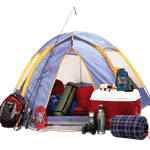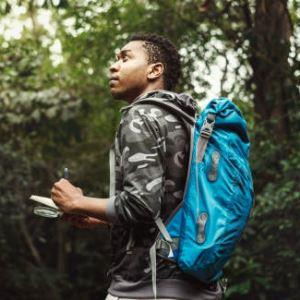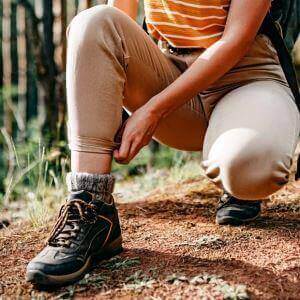 Embarking on your first safari in Kenya from the UK is a journey into one of the world's most iconic wildlife destinations. Guided tours provide structure and safety, making them the ideal choice for newcomers to the African wilderness. These tours are led by professional guides who not only drive and navigate but also interpret the behavior of wildlife, identify bird species, and share fascinating insights about the ecology of the area. Kenya offers a mix of landscapes from sweeping savannahs in the Masai Mara to the open plains beneath Mount Kilimanjaro in Amboseli. Each location offers something unique, whether it's the thunder of wildebeests during the Great Migration or the quiet beauty of flamingoes covering Lake Nakuru. Guided tours help travelers from the UK spot elusive creatures, like leopards lounging in trees or rhinos grazing in the early morning mist, that would be difficult to find without expert help. A typical day on a Kenyan safari begins just before dawn. This is the best time for spotting predators and observing natural behavior in cooler temperatures. After a morning drive, you return to your lodge for a hearty breakfast and rest. The afternoon drive begins when the sun dips lower and the animals become active again. Evenings offer time to relax, listen to stories around a fire, and soak in the starry African sky. Choosing a guided tour also means all the logistics from transport between parks to meals and accommodation are taken care of. This is especially helpful for UK visitors new to the environment, where road conditions and travel times can be unpredictable. For first-time safari-goers from the UK, having a professional team manage your experience ensures your time is focused on the animals, the landscapes, and the wonder of it all. Our mission is to make every first safari in Kenya for UK travelers a balanced blend of adventure, learning, and relaxation. We carefully match each guest with knowledgeable, licensed guides who tailor each day’s journey to your interests, pace, and expectations. These guides not only lead the way but enrich your experience with insights about Kenya’s wildlife, cultures, and ecosystems. Whether you're an avid photographer, a curious first-timer, or a nature lover seeking solitude, we create space for every type of traveler to feel at ease. With safety as a foundation, and comfort woven into the details, we focus on creating unforgettable encounters from sunrise over the savannah to the distant call of a lion at night. Our goal is to help UK visitors connect deeply with Kenya’s extraordinary wilderness, to witness its rhythms firsthand, and to leave with a renewed sense of wonder. We don’t just show you Kenya; we help you feel it.
Embarking on your first safari in Kenya from the UK is a journey into one of the world's most iconic wildlife destinations. Guided tours provide structure and safety, making them the ideal choice for newcomers to the African wilderness. These tours are led by professional guides who not only drive and navigate but also interpret the behavior of wildlife, identify bird species, and share fascinating insights about the ecology of the area. Kenya offers a mix of landscapes from sweeping savannahs in the Masai Mara to the open plains beneath Mount Kilimanjaro in Amboseli. Each location offers something unique, whether it's the thunder of wildebeests during the Great Migration or the quiet beauty of flamingoes covering Lake Nakuru. Guided tours help travelers from the UK spot elusive creatures, like leopards lounging in trees or rhinos grazing in the early morning mist, that would be difficult to find without expert help. A typical day on a Kenyan safari begins just before dawn. This is the best time for spotting predators and observing natural behavior in cooler temperatures. After a morning drive, you return to your lodge for a hearty breakfast and rest. The afternoon drive begins when the sun dips lower and the animals become active again. Evenings offer time to relax, listen to stories around a fire, and soak in the starry African sky. Choosing a guided tour also means all the logistics from transport between parks to meals and accommodation are taken care of. This is especially helpful for UK visitors new to the environment, where road conditions and travel times can be unpredictable. For first-time safari-goers from the UK, having a professional team manage your experience ensures your time is focused on the animals, the landscapes, and the wonder of it all. Our mission is to make every first safari in Kenya for UK travelers a balanced blend of adventure, learning, and relaxation. We carefully match each guest with knowledgeable, licensed guides who tailor each day’s journey to your interests, pace, and expectations. These guides not only lead the way but enrich your experience with insights about Kenya’s wildlife, cultures, and ecosystems. Whether you're an avid photographer, a curious first-timer, or a nature lover seeking solitude, we create space for every type of traveler to feel at ease. With safety as a foundation, and comfort woven into the details, we focus on creating unforgettable encounters from sunrise over the savannah to the distant call of a lion at night. Our goal is to help UK visitors connect deeply with Kenya’s extraordinary wilderness, to witness its rhythms firsthand, and to leave with a renewed sense of wonder. We don’t just show you Kenya; we help you feel it.
Quick Reference Guide: Essential Safari Planning Insights for UK Travellers
| Feature | Description | Recommended by Homejoy Safari Adventures |
|---|---|---|
| Best Parks for Beginners | Masai Mara, Amboseli, Lake Nakuru | ✓ |
| Ideal Travel Season | June to October | ✓ |
| Wildlife Highlights | Big Five, flamingoes, giraffes, cheetahs | ✓ |
| Daily Schedule | Two game drives + leisure & cultural time | ✓ |
| Clothing Essentials | Neutral tones, layered outfits, walking shoes | ✓ |
| Packing Must-Haves | Binoculars, repellent, travel docs, reusable water bottle | ✓ |
Top National Parks for First-Time Safaris in Kenya for UK Visitors
Planning a first safari from the UK to Kenya? Choosing the right national park is essential to making the most of your adventure. Kenya offers a diverse selection of parks, each with unique wildlife, landscapes, and facilities that are particularly well-suited to first-time visitors. Here are some of the top options for UK travellers:
- Masai Mara National Reserve: Widely regarded as Kenya’s premier safari destination, Masai Mara is ideal for UK visitors on their first trip. The open savannahs provide excellent visibility for spotting wildlife, including the famed Big Five. From July to October, the Great Wildebeest Migration is a must-see event, showcasing millions of animals crossing the Mara River. Accommodations range from luxury lodges to budget-friendly camps, and the area is well-serviced with airstrips for convenient travel.
- Amboseli National Park: Located near the Tanzanian border and in the shadow of Mount Kilimanjaro, Amboseli is famous for its large elephant herds and stunning views of Africa's highest peak. Its flat terrain and short vegetation make it easier for first-time safari-goers to spot wildlife. This park offers a great introduction to Kenya’s ecological diversity and is especially photogenic.
- Lake Nakuru National Park: Perfect for UK families and bird lovers, Lake Nakuru is compact and easy to explore within a day or two. The park is known for its rhino sanctuary, thousands of flamingoes, and other birdlife. Rothschild giraffes, baboons, and leopards are also common sights. Its location in the Great Rift Valley makes it accessible by road from Nairobi.
- Samburu National Reserve: For those looking to go beyond the mainstream parks, Samburu in northern Kenya offers a more rugged and remote experience. Home to the rare 'Samburu Special Five' Grevy’s zebra, Somali ostrich, gerenuk, beisa oryx, and reticulated giraffe this park offers something different for first-timers seeking unique encounters.
- Tsavo East and Tsavo West National Parks: These twin parks together form Kenya’s largest protected area. While less frequented by first-timers, they provide a wilder and less crowded experience. Tsavo is excellent for observing elephants with red dust-covered skin, big cats, and dramatic landscapes, including the Mzima Springs and Chyulu Hills.
Each of these parks provides well-established infrastructure, experienced guides, and a variety of accommodations to suit UK visitors’ preferences and budgets. Whether you want iconic wildlife, dramatic landscapes, or an introduction to Kenyan culture, there’s a national park perfect for your first safari in Kenya.
What to Pack for a Guided Safari Tour in Kenya from the UK
Packing smart is essential when preparing for your first guided safari tour in Kenya from the UK. The right gear will not only keep you comfortable and safe but also ensure that you’re ready to fully enjoy the awe-inspiring landscapes and wildlife experiences. Here’s a comprehensive guide to help UK travellers pack effectively:
- Lightweight, Earth-Toned Clothing: Stick to neutral shades like khaki, olive, and beige. These colors blend in with natural surroundings and reduce the chance of startling wildlife. Opt for breathable, moisture-wicking fabrics and pack clothes that you can layer mornings and evenings can be chilly while midday temperatures rise quickly.
- Comfortable Footwear: Bring a pair of sturdy, closed-toe walking shoes or lightweight boots with good grip. While most game drives involve minimal walking, you’ll want solid footwear for lodge surroundings, bush walks, and cultural excursions.
- Sun and Insect Protection: The African sun is intense, so pack a wide-brim hat, high-SPF sunscreen, and UV-protection sunglasses. Don’t forget insect repellent with DEET to ward off mosquitoes, especially during early morning and dusk drives.
- Essential Tech and Accessories: Binoculars are a must for spotting distant wildlife, and a quality camera with extra batteries and memory cards is invaluable for capturing memories. UK visitors should also bring a power adapter (Type G plug) to keep devices charged.
- Reusable Water Bottle: Staying hydrated is crucial during long drives. A reusable, insulated water bottle helps keep water cool and reduces plastic waste.
- Daypack or Small Backpack: Ideal for carrying your daily essentials like your camera, snacks, water, guidebook, and first aid items. Look for a pack with padded straps and compartments for easy organization.
- Travel Documents and Copies: Bring your passport, printed e-visa, insurance papers, vaccination records, and confirmation documents for your safari bookings. Keep digital and paper copies in a waterproof pouch.
- Personal Medications and First Aid: Pack all necessary medications in original packaging, along with a small first aid kit that includes plasters, antiseptic wipes, antihistamines, and malaria prophylaxis if advised by your GP. Also, include hand sanitizer, wet wipes, and tissues for hygiene in remote areas.
- Optional Extras: A lightweight jacket or fleece, swimsuit for lodge pools, travel laundry detergent, and a headlamp or small torch can add comfort to your safari experience.
Being prepared ensures a smooth and enjoyable adventure. By packing wisely, UK travellers can focus on what matters most soaking up the magic of the Kenyan wilderness.
Wildlife You Can Expect to See on a Kenyan Safari For UK First-Timers
For UK travellers embarking on their first Kenyan safari, the variety of wildlife to be encountered is nothing short of breathtaking. Kenya's national parks and reserves are home to a dazzling array of species, ranging from the legendary Big Five to rare birds and unique herbivores. Guided tours greatly enhance the wildlife viewing experience by helping first-timers not only spot animals but understand their behaviours, roles in the ecosystem, and the conservation efforts behind their protection. The Big Five lion, leopard, elephant, rhino, and Cape buffalo are a major drawcard for most safari-goers, and Kenya is one of the few places where you have a strong chance of seeing them all. In the Masai Mara, it is common to witness lions lounging in the shade or moving stealthily through the grass in hunting formation. Leopards, though elusive, are often spotted draped over tree branches in places like Lake Nakuru and Samburu. Amboseli and Tsavo are renowned for their large elephant herds, often seen crossing the plains in family groups. Rhinos, particularly the endangered black rhino, can be seen in protected zones such as the Lewa Conservancy and Lake Nakuru National Park. Beyond the Big Five, Kenya boasts other captivating predators such as cheetahs, who can often be seen scanning the savannah from termite mounds before sprinting after prey. Hyenas, with their unmistakable calls and powerful jaws, also feature prominently in Kenya's predator hierarchy. These scavengers play a critical ecological role, and sightings often lead to fascinating discussions with your guide. Giraffes, with their slow grace and towering presence, are frequently seen across most parks, especially in Samburu, which is home to the rare reticulated giraffe. Antelopes such as impalas, gazelles, and elands dot the grasslands, offering constant activity for predators and photo opportunities for visitors. Zebras often travel in large herds and are a common sight in regions like the Masai Mara and Amboseli. The aquatic side of Kenya's wildlife is equally impressive. Hippopotamuses can be seen submerged in rivers and lakes during the day, emerging at dusk to graze. Crocodiles lurk near riverbanks, particularly during the Great Migration when wildebeests attempt their perilous crossings. Birdlife in Kenya is phenomenal, with over 1,100 species recorded. UK visitors will be enthralled by the vibrant plumage of lilac-breasted rollers, flocks of flamingoes painting the shores of Lake Nakuru pink, and a variety of raptors, hornbills, and weavers. Guides help identify these species and explain their unique behaviours, enriching your appreciation of Kenya's avian diversity. A Kenyan safari offers an unforgettable introduction to Africa’s incredible wildlife. From roaring lions at dawn to silent giraffes grazing at sunset, the experience will leave UK travellers in awe of nature's raw beauty and complexity.
Daily Itinerary on a Typical Kenyan Safari Tour for UK Travelers
A typical day on a guided Kenyan safari for UK travelers is carefully structured to maximize wildlife sightings while allowing time for rest, cultural experiences, and relaxation. The daily rhythm follows nature's pace, with early mornings and late afternoons dedicated to game drives, when animals are most active. Here’s what you can expect during a standard day on safari:
- 05:30 AM – Wake-up Call & Light Breakfast: Your day begins early with a gentle wake-up and a light breakfast consisting of tea, coffee, and biscuits or fruit. Early starts are essential for catching predators before they retreat from the heat.
- 06:00 AM – Morning Game Drive: The first game drive of the day takes advantage of the cooler hours when animals are most active. With the guidance of expert trackers, you'll explore the bush in search of lions, elephants, giraffes, and more. The golden light of dawn also offers excellent photography opportunities.
- 09:00 AM – Full Breakfast at the Lodge: After a few hours exploring, you return to your lodge or camp for a hearty breakfast, usually served buffet-style. This is a time to recharge and discuss the morning's sightings with fellow travelers.
- 11:00 AM to 1:00 PM – Leisure or Optional Activities: Midday is the warmest time of day, so most animals rest, and so do you. Some lodges offer optional activities such as bush walks, visits to local communities, or spa treatments.
- 1:00 PM – Lunch: A freshly prepared lunch is served at your accommodation, often including a mix of international and Kenyan cuisine. It’s a relaxing, social time before the next adventure.
- 3:30 PM – Afternoon Game Drive: As the heat of the day fades, wildlife becomes active again. Your second game drive gives another chance to see species missed in the morning and enjoy the vibrant colours of the setting sun.
- 6:30 PM – Sundowners: Many safaris conclude the afternoon drive with sundowners a relaxing drink served at a scenic viewpoint as the sun sets over the African landscape.
- 7:30 PM – Dinner & Campfire Stories: Return to camp for a three-course dinner followed by stories around a campfire. Guides may share tales from the bush, and you can swap highlights with other travellers.
- 9:00 PM Onwards – Rest or Stargazing: End your day by gazing up at Kenya’s dazzling night sky. Whether you stay in a luxury lodge or a tented camp, rest comes easily with the distant sound of wildlife echoing through the dark.
This well-paced itinerary ensures that UK travelers experience both the thrill of discovery and the tranquility of the African wilderness.
Best Time of Year for a First Safari in Kenya for UK Travelers
For UK travellers planning their first safari in Kenya, timing your visit can greatly enhance your experience. Kenya offers wildlife viewing opportunities year-round, but certain seasons stand out for their favourable conditions, ease of travel, and unique natural spectacles. Understanding Kenya’s climate and how it affects wildlife behaviour is key to choosing the perfect window for your safari adventure. The most popular time for a first safari is during the long dry season from June to October. These months coincide with the Great Wildebeest Migration in the Masai Mara, where millions of wildebeest, zebras, and gazelles cross the plains and rivers in search of greener pastures. This dramatic movement attracts predators and offers some of the best wildlife action and photography opportunities on the continent. With sparse vegetation and animals congregating around water sources, game viewing is at its peak. The weather is pleasant cool in the mornings and warm during the day and there’s very little rain, making travel smoother and more comfortable. For those who prefer fewer crowds, the short dry season from January to early March is another excellent time to visit. Although the Great Migration is not active, wildlife remains abundant, and the scenery is still lush from the short rains in November and December. This season is particularly attractive for bird watchers, as migratory species from Europe and Asia arrive in Kenya, adding to the already rich avian diversity. Parks are generally less crowded, offering a more tranquil and intimate safari experience for first-time visitors from the UK. The long rainy season, which occurs from April to May, is usually considered less ideal for first-time safari-goers. Heavy rains can make roads muddy and difficult to navigate, while thick vegetation can obscure wildlife. However, this green season has its advantages. The landscapes are beautifully lush, accommodation rates drop significantly, and tourist numbers are lower. For UK travellers seeking solitude and dramatic scenery, this could be a peaceful and rewarding alternative. The short rainy season in November can bring brief showers, mostly in the afternoons and evenings, but it doesn't typically hinder wildlife viewing. This shoulder season offers a balance between value and accessibility, and it’s suitable for travellers open to occasional rain in exchange for fewer crowds and vibrant landscapes. The best time for your safari will depend on your priorities whether you're after dramatic migrations, exclusive experiences, or budget-friendly travel. Whichever season you choose, a guided tour ensures that conditions are navigated safely and your experience remains rich and unforgettable.
What to Wear on Your First Safari in Kenya; UK Visitor Guide
Preparing for your first safari in Kenya from the UK involves more than just booking flights and lodging it’s also about packing the right clothes to stay comfortable, protected, and respectful of the natural environment. Kenya’s diverse climates and safari conditions mean that your wardrobe should be both practical and adaptable. Below are key clothing recommendations every UK visitor should consider, each explained to ensure a smooth and enjoyable experience:
- Earth-Toned Clothing (Khaki, Green, Brown): Wearing neutral colours helps you blend into the environment and increases your chances of observing wildlife undisturbed. Bright colours or white can scare animals, while black and blue may attract tsetse flies.
- Long-Sleeved Shirts and Trousers: Early mornings and evenings can be chilly, and covering your arms and legs protects you from the sun and insect bites. Choose breathable fabrics like cotton or technical travel wear that dries quickly and keeps you cool.
- Layered Outfits for Changing Temperatures: Safaris begin before dawn when temperatures are low and continue into the midday heat. Wear multiple lightweight layers you can remove or add as needed like a T-shirt under a fleece or windbreaker.
- Comfortable Walking Shoes or Hiking Boots: While most game viewing happens from a vehicle, you may take short bush walks or explore lodge grounds. Durable, closed-toe footwear with good grip is essential for uneven terrain.
- Wide-Brimmed Hat and UV Sunglasses: Protect your head, face, and eyes from the strong equatorial sun. A wide-brimmed hat offers more coverage than a cap, and polarised sunglasses reduce glare during long drives.
- Light Fleece or Jacket: Even in warm seasons, early mornings in the Masai Mara or Amboseli can be surprisingly cold. A fleece or light insulated jacket adds crucial warmth during those dawn drives.
- Swimsuit: Many safari lodges offer pools or spas, and a dip after a hot game drive can be incredibly refreshing.
- Lightweight Scarf or Buff: This versatile accessory can shield your neck from the sun, protect your face from dust on game drives, or serve as a layer on cool evenings.
Choosing the right attire enhances not only your comfort but also your ability to fully enjoy the safari. When travelling from the UK, it’s especially important to prepare for the temperature shifts and varying terrains of the Kenyan wilderness. Thoughtful clothing choices can make all the difference between a good safari and an exceptional one.
Guided Safari Tours: What Makes Them Ideal for UK First-Timers?
 For first-time visitors from the UK, navigating the vast wilderness of Kenya can be both exciting and overwhelming. That’s why guided safari tours are an ideal choice they offer structure, expertise, and peace of mind, allowing you to focus entirely on enjoying the experience. From wildlife tracking to cultural insights, guided safaris ensure you gain the most from every moment without the stress of handling logistics on your own. Guided tours are led by knowledgeable professionals who do more than just drive the safari vehicle. These experienced guides act as naturalists and storytellers, helping you interpret animal behaviours, understand the ecosystem, and identify bird and plant species. Their insights can transform an ordinary game drive into a rich, educational experience that connects you deeply with Kenya’s landscapes and wildlife. Another major advantage for UK travellers is the convenience and safety that guided tours offer. Transport between national parks, park entry fees, accommodation, and meals are typically included in the package, eliminating the need to navigate unfamiliar roads or negotiate local arrangements. Especially in regions with remote locations or unpredictable terrain, having a seasoned guide and support team ensures your journey remains smooth and worry-free. Guided safari tours also allow access to areas and experiences that may be off-limits to independent travellers. Certain private conservancies, night drives, or walking safaris require special permits and local knowledge. A guided tour opens these doors while ensuring activities are conducted ethically and with respect for conservation laws. UK first-timers also benefit from the social aspect of guided group tours. Sharing the experience with fellow travellers can enrich your journey, whether through group game drives, mealtime conversations, or shared moments of awe during wildlife sightings. Many operators also offer private or semi-private options for those seeking a more intimate or tailored experience. Many guided safaris include cultural excursions such as visits to Maasai villages or traditional cooking classes which provide deeper context to Kenya's human history and traditions. These moments of cultural immersion are handled sensitively and respectfully by professional guides who serve as bridges between guests and local communities. Guided safaris offer a seamless blend of exploration, learning, and comfort. For UK travellers unfamiliar with the African bush, the expertise and reassurance of a guided tour make it the best way to ease into the safari experience. With everything taken care of, you can fully focus on the thrill of spotting wildlife, the beauty of Kenya’s diverse ecosystems, and the unforgettable memories being made along the way.
For first-time visitors from the UK, navigating the vast wilderness of Kenya can be both exciting and overwhelming. That’s why guided safari tours are an ideal choice they offer structure, expertise, and peace of mind, allowing you to focus entirely on enjoying the experience. From wildlife tracking to cultural insights, guided safaris ensure you gain the most from every moment without the stress of handling logistics on your own. Guided tours are led by knowledgeable professionals who do more than just drive the safari vehicle. These experienced guides act as naturalists and storytellers, helping you interpret animal behaviours, understand the ecosystem, and identify bird and plant species. Their insights can transform an ordinary game drive into a rich, educational experience that connects you deeply with Kenya’s landscapes and wildlife. Another major advantage for UK travellers is the convenience and safety that guided tours offer. Transport between national parks, park entry fees, accommodation, and meals are typically included in the package, eliminating the need to navigate unfamiliar roads or negotiate local arrangements. Especially in regions with remote locations or unpredictable terrain, having a seasoned guide and support team ensures your journey remains smooth and worry-free. Guided safari tours also allow access to areas and experiences that may be off-limits to independent travellers. Certain private conservancies, night drives, or walking safaris require special permits and local knowledge. A guided tour opens these doors while ensuring activities are conducted ethically and with respect for conservation laws. UK first-timers also benefit from the social aspect of guided group tours. Sharing the experience with fellow travellers can enrich your journey, whether through group game drives, mealtime conversations, or shared moments of awe during wildlife sightings. Many operators also offer private or semi-private options for those seeking a more intimate or tailored experience. Many guided safaris include cultural excursions such as visits to Maasai villages or traditional cooking classes which provide deeper context to Kenya's human history and traditions. These moments of cultural immersion are handled sensitively and respectfully by professional guides who serve as bridges between guests and local communities. Guided safaris offer a seamless blend of exploration, learning, and comfort. For UK travellers unfamiliar with the African bush, the expertise and reassurance of a guided tour make it the best way to ease into the safari experience. With everything taken care of, you can fully focus on the thrill of spotting wildlife, the beauty of Kenya’s diverse ecosystems, and the unforgettable memories being made along the way.






